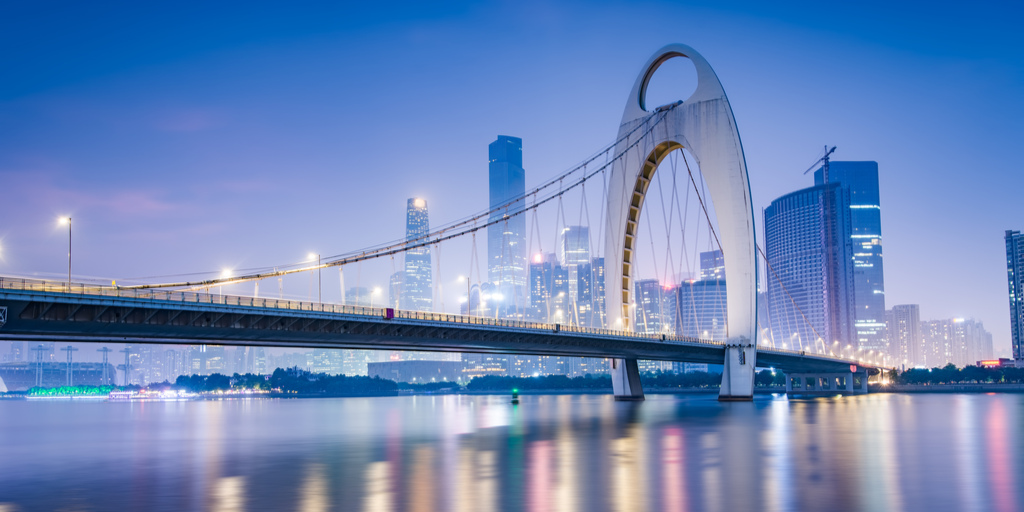Data insights from CEIC’s China Premium Database indicate that, while GHM Bay represents only 0.6% of China territory, it accounts for over 12% of its GDP.
Hong Kong has traditionally played an influential role in integrating China with the world. At today’s critical juncture in China’s reopening, that role has been strengthened by the new opportunities arising from the Belt and Road initiative and the Guangdong-Hong Kong-Macau Greater Bay Area (GHM Bay).
The GHM Bay comprises Hong Kong, Macau, and nine cities in Guangdong (Guangzhou, Shenzhen, Dongguan, Huizhou, Zhaoqing, Foshan, Zhongshan, Zhuhai and Jiangmen), which together have an economic significance comparable to that of other top bay regions like Tokyo Bay, New York Bay or San Francisco Bay.
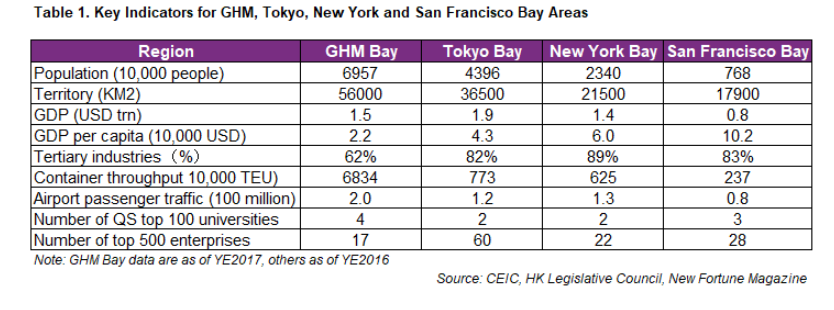
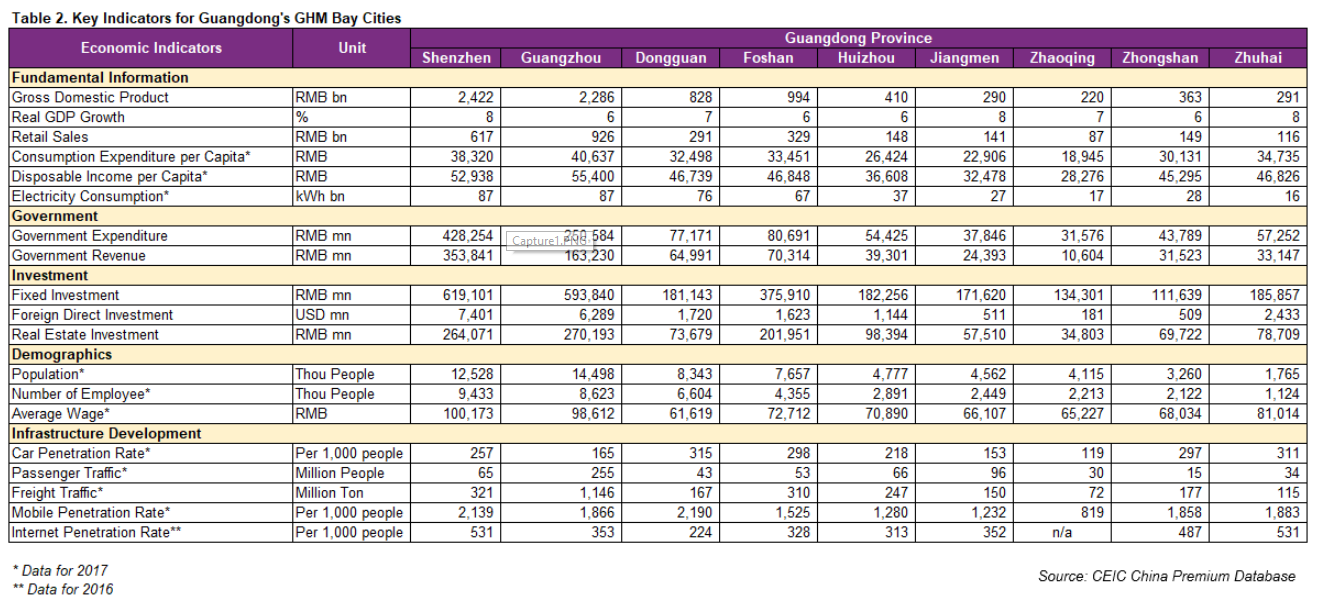
Although Hong Kong, Macau and top-tier mainland cities such as Guangzhou and Shenzhen have historically exhibited development indicators significantly more positive than other cities within the country, their growth will naturally slow down as those markets mature. Thus, lower-tier cities, which currently account for more than two-thirds of China’s economy and more than 70% of its population, will be key to unlocking the next phase of growth.
In the past few years, living standards in the tier-three and tier-four cities of Guangdong province have recorded a remarkable improvement with disposable income per capita in cities like Foshan, Dongguan and Zhongshan exceeding that of most tier-two cities in China. In 2017, the average disposable income per capita of the lower-tier cities in Guangdong reached RMB 33,437, above the average of RMB 31,115 for tier-three and tier-four cities in the country as a whole. And they have benefitted from income convergence: in 2017, disposable per capita incomes in the lower-tier cities of Guangdong stood at 53.9% of the figure for China’s tier-one cities, compared to 51.6% in 2012. In contrast, disposable income in lower-tier cities in the rest of the country decreased from 55.2% of that in tier-one cities in 2012 to 53.3% in 2017.
Driven by growing incomes, consumer expenditure in the tier-three and tier-four cities increased by 64.6% over the years 2012-2017, while average growth in lower-tier cities in the rest of the country was just 36.6%.
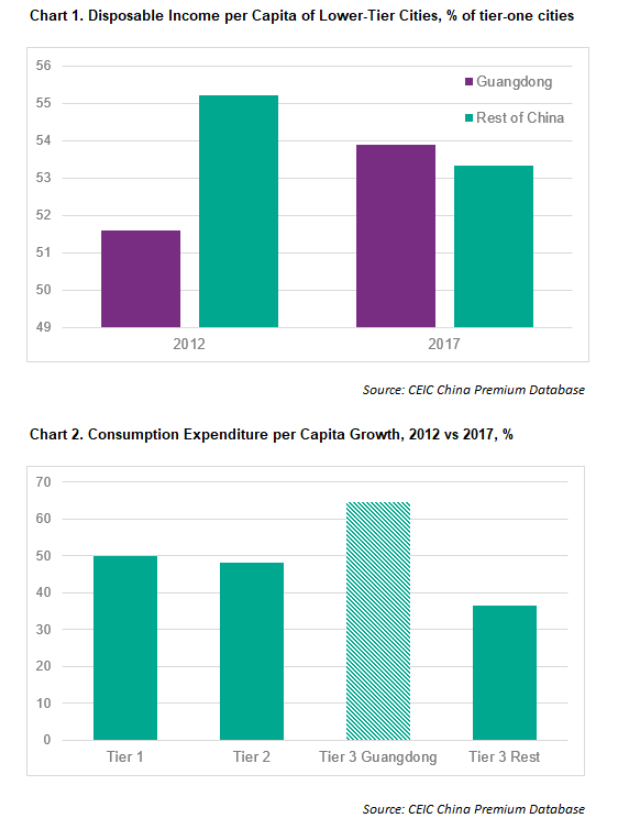
The GHM Bay Area has three strengths:
1. A well-developed transportation network
GHM Bay boasts an advanced transportation and logistics network, with five airports and six ports, and ranks top among the four bay areas in terms of airport passenger traffic and container throughput. Dense rail and expressway networks not only give GHM Bay advantages in multimodal transport but also strengthen its pivotal status in the Belt and Road initiative. The strategic area is sharing connectivity ties through cross-boundary transportation networks as summarized in the table below. All of which will significantly shorten the commuting time for Hong Kong and Macau residents and boost ties between Hong Kong, Macau and Mainland China.
According to the Hong Kong Infrastructure Report for Q3 2019, published by BMI Research on EMIS Professional Service, Hong Kong has been recognized as the first class innovation in infrastructure projects, with the full-year 2018 HKD 46bn worth of projects in the planning and construction stages, and 79% of them were in the transport sector. Besides, it continues to get the second rank in World Competitiveness Yearbook 2019 (published on 28 May) following Singapore. With reference to the report, Hong Kong is being acclaimed as the top tier in government efficiency, business efficiency, and economic performance.
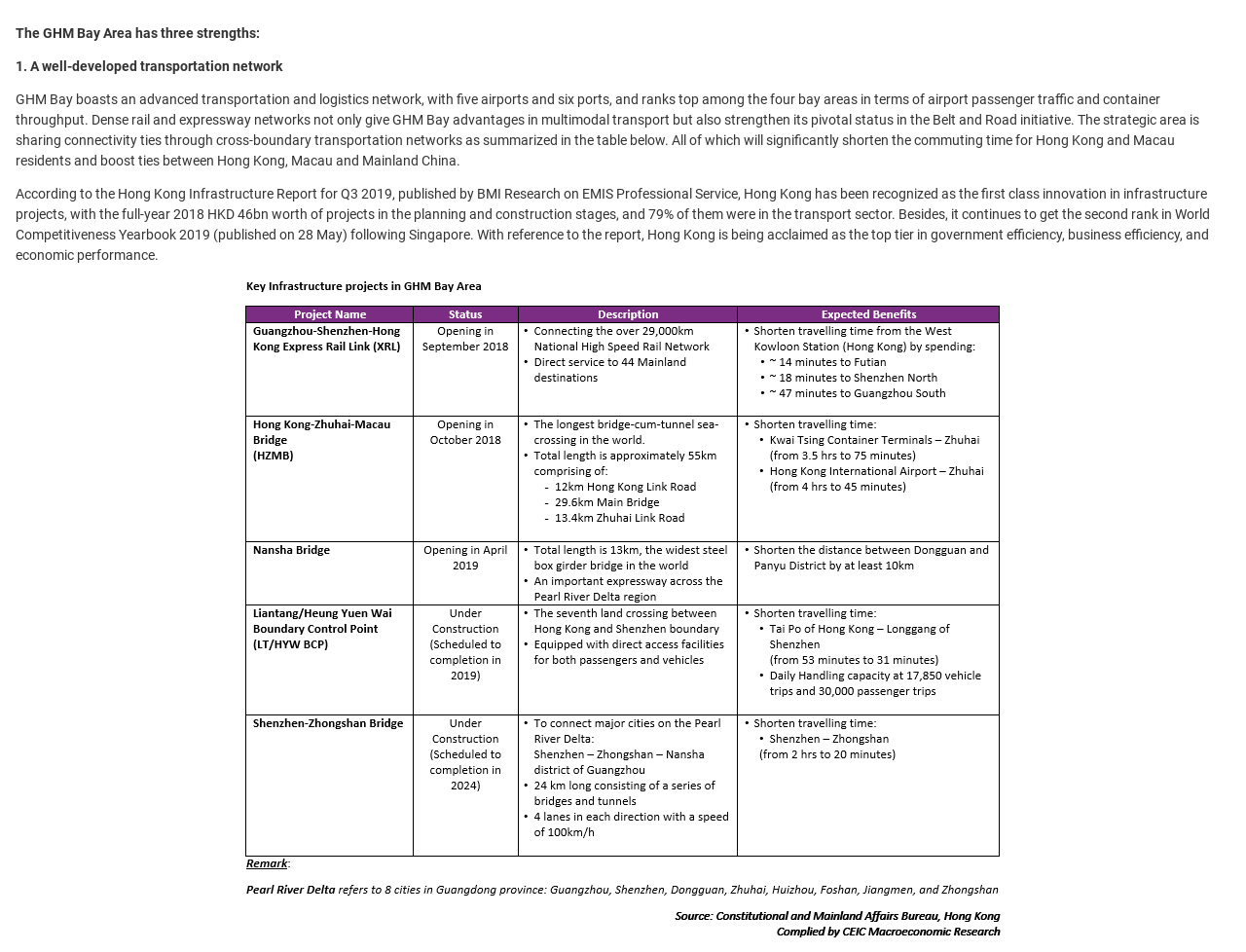
2. Key networks of innovation
Cities in GHM Bay invest heavily in research and development (R&D): Shenzhen invests 4.1% of its GDP, far exceeding the OECD average. GHM Bay has a great edge in 5G technology, artificial intelligence (AI), genetic sequencing and new energy vehicle manufacturing. GHM Bay has four of the world’s top 100 universities and six National High-Tech Industrial Development Zones, and boasts 176,000 applications for invention patents. In its report The Global Innovation Index 2018, the World Intellectual Property Organization (WIPO) ranked the Shenzhen-Hong Kong region as second only to Tokyo-Yokohama in global innovation.
3. Strong industrial clusters
GHM Bay has clear division of industries among cities. The professional services of Hong Kong and Macau, and the science and innovation resources of Guangzhou and Shenzhen, combined with mature manufacturing industries in other GHM Bay cities, facilitate resource sharing. Specifically, Hong Kong, as an international finance centre has the edge in respect of logistics, low tariffs, capital mobility, its institutional system and its poll of talents. Thus, Hong Kong can not only provide capital for research application and industrial upgrading, but also serve as a role model for mainland companies in modern services.
This piece was compiled through the primary use of the CEIC China Premium Database. Learn more by clicking the link below.
.png?width=160&name=ceic-logo-Vector%20logo%20no%20tagline%20(002).png)

